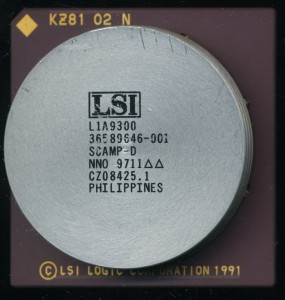The Forgotten Ones: Unisys SCAMP-D Mainframe
Burroughs Corporation started in 1886, making it the oldest computation company still in existence. In September 1986, Burroughs merged with Sperry Corporation (of UNIVAC fame) to form Unisys which exists to this day. The story of the SCAMP though begins in 1961, with the introduction of the Burroughs B5000 mainframe. Burroughs was a bit late to the mainframe market, but entered it with a computer that was rather ahead of its time. The B5000 was a stack based design, and designed from the get go with the programmer in mind, it was designed with software implementation (namely the high level languages ALGOL and COBOL) in mind, rather then wrapping software around hardware design. This made it easy to program, and thus allowed Burroughs to take customer from IBM, who released the System/360 shortly thereafter.
In 1969 the B6500 was released, improving on the design and with it the MCP (Master Control Program). MCP was Burroughs operating system, and what came to define their machines for the decades to come. The B6000 line (like the B5000) was a 48-bit architecture. In addition to the 48-bit data size was a 3-bit tag that told the system what that data was, code, data, type, etc. This simplified the instruction set greatly as instruction need not be specific to each data type, they could check the tag and know what type of data. Coincidentally this also allowed for greater security as well, many of the buffer overflow exploits we have seen in the modern day were not possible on a Burroughs, the tag did not allow data to be executed as code, essentially it could perform as a NX flag (No Execute) such as is on modern x86 processors.
In 1984 the first A-series was released, as well as what would become ‘e-code’ a definition of the Burroughs instruction set that could be implemented in a variety of processors. Like the DEC VAX, Burroughs wanted to clearly define the instruction set, and leave the implementation of it up to the hardware designers. This helped ensure robust compatibility, and future proofing, ad is why MCP programs from the 70’s still can be ran today.
Posted in:
CPU of the Day


